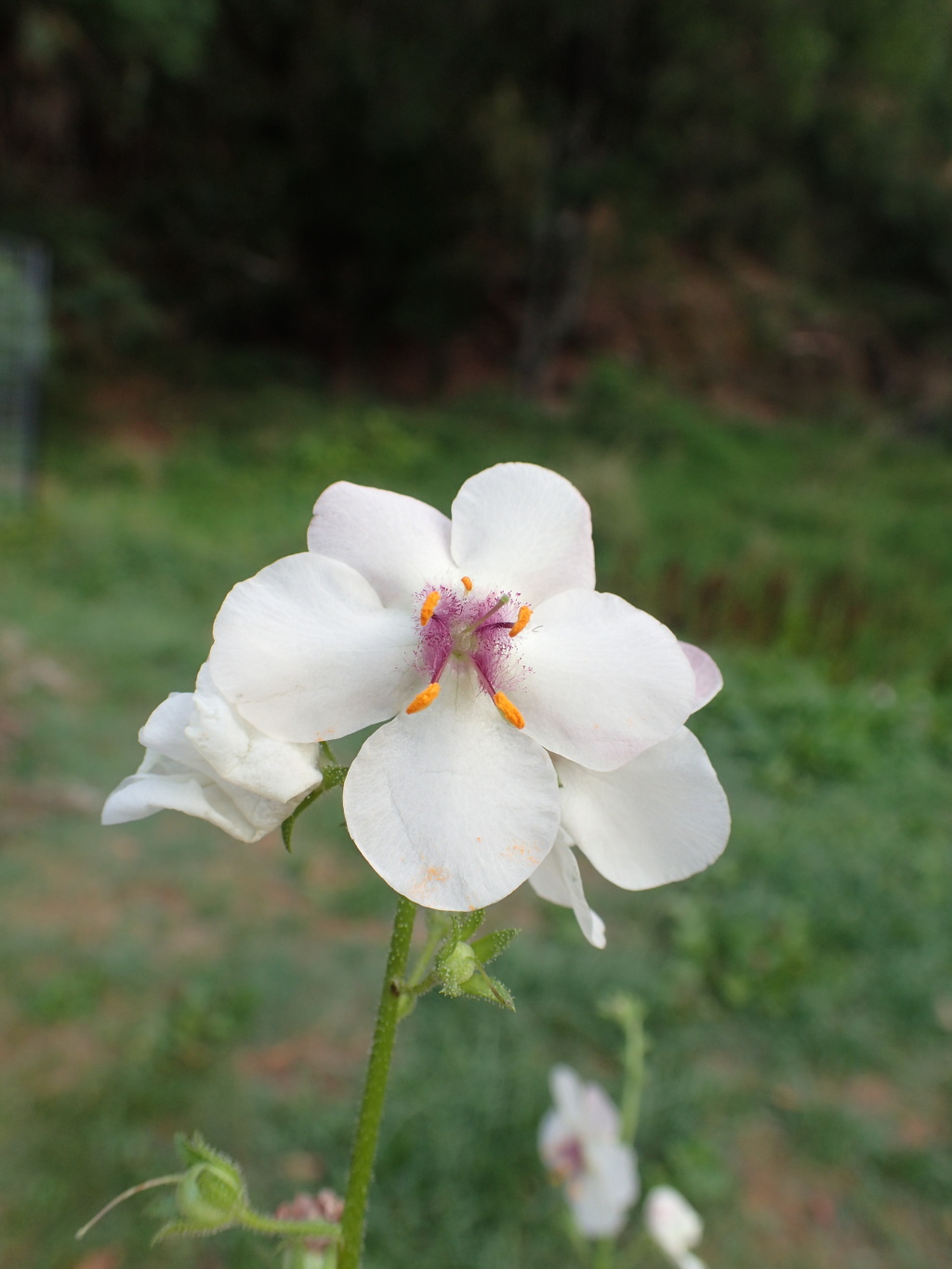Verbascum blattaria
L. Moth MulleinErect biennial 0.5–1.2 m high, glabrous below, with stalked or sessile glands above. Leaves in the lower parts oblong to oblanceolate, lamina 8–25 cm long, 2–4 cm wide, base tapering into short petiole, margins crenate-sinuate to pinnatifid; stem leaves sessile, stem-clasping. Racemes simple or few-branched, 30–60 cm long; flowers solitary in bract axils; bracts 7–8 mm long; pedicels 10–15 mm long (to 25 mm in fruit). Sepals 5–8 mm long; corolla 2.5–3 cm diam., pale pink, white (or yellow) with purple centre, upper lobes shortest; stamens 5, lower pair longest, 7–9 mm long, filaments densely villous, hairs of the 2 lower stamens purple, of the 3 upper white and purple, anthers all reniform, but those of lower 2 stamens obliquely inserted and decurrent along filament. Capsule globose, 7–8 mm long, finely glandular-pubescent. Flowers spring and summer.
VVP, VRiv, GipP, WaP, CVU, NIS, HSF, HNF, VAlp. Also naturalised NSW, Tas. Native to Europe and Asia. Locally common weed of disturbed ground, roadsides, pasture etc. in the north-east (e.g. Wangaratta, Tallangatta, Corryong), rather uncommon elsewhere in the State.
Barker, W.R.; Harden, G.J. (1999). Verbascum. In: Walsh, N.G.; Entwisle, T.J., Flora of Victoria Vol. 4, Cornaceae to Asteraceae, pp. 498–500. Inkata Press, Melbourne.
 Spinning
Spinning

